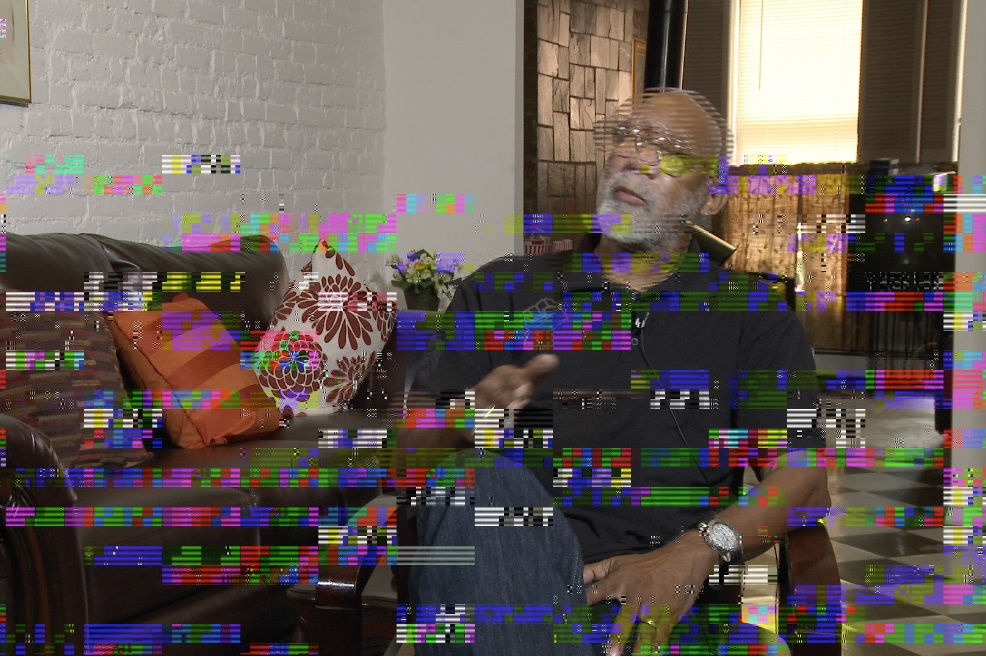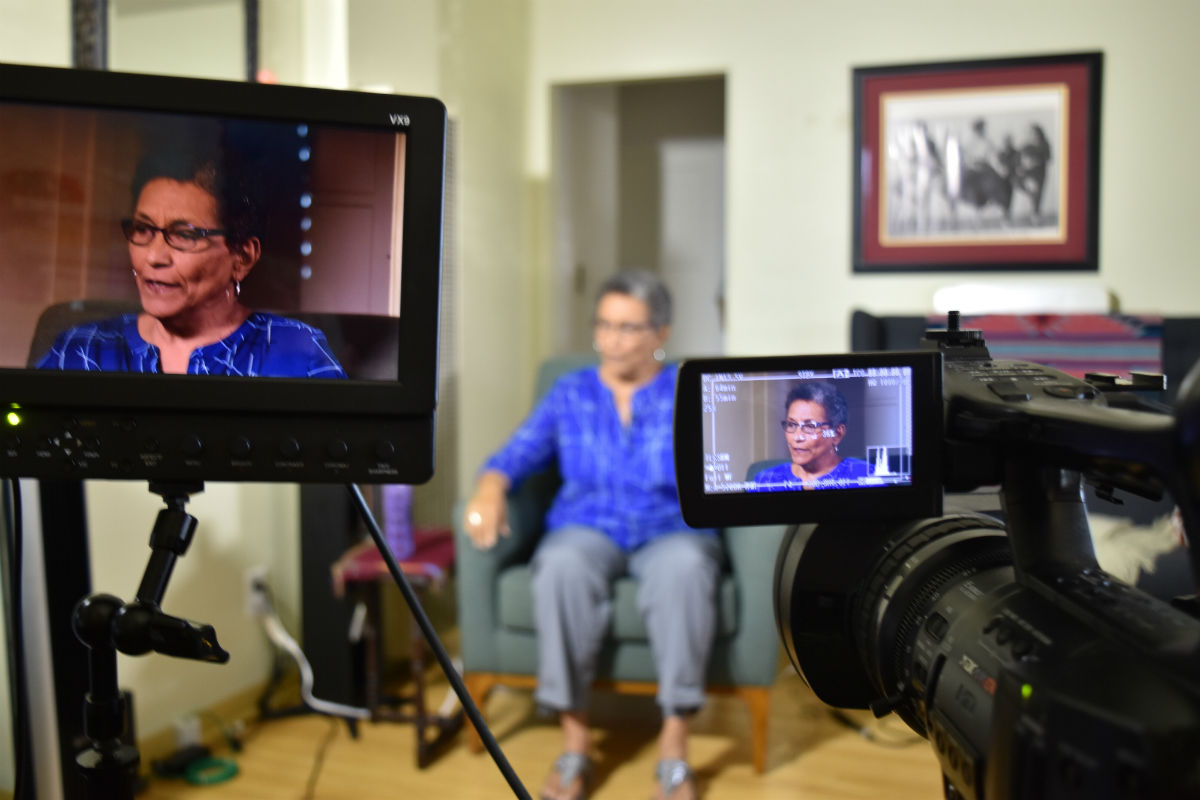On May 12, 2009, the U.S. Congress authorized a national initiative by passing the Civil Rights History Project Act. The law directs the Library of Congress (LOC) and the Smithsonian’s National Museum of African American History and Culture to conduct a nationwide survey of existing oral history collections with relevance to the civil rights movement to obtain justice, freedom, and equality for African Americans and to record new interviews with people who participated in the struggle.
From 2010 through 2016, NMAAHC curator Elaine Nichols chose the interviewees and coordinated the interviews. It was of critical importance to select activists who had never been interviewed before as well as those who were aging. Joe Mosnier of the University of North Carolina’s Southern Oral History Program (SOHP) conducted the first sixty interviews, and videographers Charlie Weber, John Bishop, and Petna N’daliko filmed all of the 109 interviews.
The activists chosen discussed the March on Washington for Jobs and Freedom, the Albany Movement, the Freedom Rides, the Selma to Montgomery Rights March, the Orangeburg Massacre, local sit-ins, voter registration drives in the South, the murder of fourteen-year-old Emmett Till, and more. They belonged to national activist groups such as the National Association for the Advancement of Colored People, the Student Nonviolent Coordinating Committee, and the Congress of Racial Equality, as well as specialized and local groups including the Medical Committee for Human Rights, the Deacons for Defense and Justice, the Cambridge (Maryland) Nonviolent Action Committee, and the Newark Community Union Project.
Watch excerpts from a few video interviews.

Archival Work
The first iteration of cataloging the oral histories began with Nichols, Mosnier, and Bishop. For the first fifty-six interviews, they used spreadsheets to track information about each interview and interviewee. Afterward, SOHP staff transcribed each interview. At LOC, Kate Stewart used this data and the transcripts to create catalog records and metadata for the library’s digital collections. Later, Bert Lyons of LOC developed an online database to facilitate metadata creation. The interviewers could then log into the system from anywhere to enter data about the interviews, and LOC staff could see the preliminary records immediately. The data was also used to create a finding aid for the entire collection with links to each online interview.
We found that one of the most difficult aspects of cataloging the interviews was distilling an hours-long transcript (a process that takes eight times the running length of the interview) into a summary of just a few sentences. Guha Shankar edited hundreds of video segments to piece together each full interview for streaming on the website. After LOC staff finished cataloging the interviews, they transferred metadata and files to NMAAHC’s Laura Coyle to be ingested into the Smithsonian’s catalog and Digital Asset Management System, working in conjunction with NMAAHC’s Media Conservation Lab in the Center for African-American Media Arts and the Smithsonian’s Office of the Chief Information Officer.
Digital Preservation
In addition to the many steps above, the long-term preservation of the CRHP born-digital video files, like all digital content marked for archival preservation, is an ongoing process. While “digital” to many can mean immateriality, the reality is that the digital bits are material, and therefore just as prone to failure, damage, and decline as the analog recording formats which hold the audiovisual history of the last century.
Shooting video across the country in the homes and offices of activists also meant risks of overheating and crashing hard drives and camera issues. These problems were compounded by the long length of time taken for each interview and the sheer number and size of the files. Unlike still image and audio recordings where file formats such as TIFF, FLAC, and WAV are recognized archival formats, initial settings for born-digital video files are not yet standardized, and their structure and technical specifications can vary widely between different companies and cameras. Selection of the best file type and setting for born-digital video is, to this day, an open-ended debate.
In the case of CRHP, we decided to strike a compromise between quality and technical impositions (for more, see the documentation of this case study). The slippery nature of digital video meant that archivists at times found glitches, or various split-second flashes of damage to the files that were not noticeable at the time of capture but discovered later when processing them for ingest into long-term digital storage. Fortunately, two hallmarks of digital preservation—redundant back-ups and checksums—remedied these issues.

Checksums are specific algorithmic outputs that function as digital “fingerprints” and ensure that any minute changes in a file can be noted. Checksums won’t necessarily tell you why a two files are different, just that they are. If checksums indicate a file has changed, the digital preservationist can use forensic tools and visual inspection—a process that is often very time-consuming. Through noting and comparing them periodically, archivists can distinguish imperceptible change across back-up copies and replace any damage with undamaged backup files. Maintaining absolute authenticity is not only technically critical, but critical to the mission of this project: to create historical records of enduring and unassailable value.
The initial collection is comprised of over 800 files from 109 interviews, where one interview could have up to 30 separate high-definition files, and totals almost 20 terabytes. More interviews are being conducted and even more are planned, so the collection is still growing.
In considering the stewardship of the files and possible future uses, our goal is to retain the highest quality files, the closest to “camera originals” as possible. However, the technical decisions of specific files retained can differ at each institution and depend on systems of cataloging, delivery, and access that are not shared across institutions. This presents many challenges for each institution, including defining authenticity, maintaining quality and file relationships, untangling and authenticating versions, understanding production processes, sharing large data packages (i.e. physically swapping hard drives), mapping data from separate databases, and developing and maintaining communication channels between the institutions when errors manifest. This work requires the time and skill sets of dozens of production, collections, cataloging, archiving, and IT staff members at both the Library of Congress and Smithsonian.
At NMAAHC, the interviews have already been delivered to the interviewees, select camera originals were sent to CSPAN for use in television programming, and originals are being concatenated to be streamed online for internal reference and for the public through Smithsonian and the NMAAHC’s websites. All of these delivery portals require different technical specifications made from the originals.
We estimate that at least 100 people contributed to the success of the project behind the scenes, including the advisory board, the interviewers, the archivists, and interns, and we would like to thank them all for their efforts. Overall, working with this large and important born digital collection has allowed us to hone our workflows, revisit our digital archiving institutional standards, troubleshoot and learn from errors, understand various delivery channels, work collaboratively across two large federal institutions, and learn from each other.
Read more articles and essays on CRHP.
Blake McDowell is a media preservation and digitization assistant at the National Museum of African American History and Culture.
Crystal Sanchez is a media archivist and system administrator for the Smithsonian’s Digital Asset Management System. She worked directly with the Civil Rights History Project files once received from the Library of Congress beginning in 2012.
Julia Kim is the digital assets specialist at the American Folklife Center at the Library of Congress. She has worked on the Civil Rights History Project since 2015.
Kate Stewart is the lead archivist at the Arizona Historical Society in Tucson. She was the archivist for the Civil Rights History Project at the American Folklife Center at the Library of Congress from 2010 to 2015.


